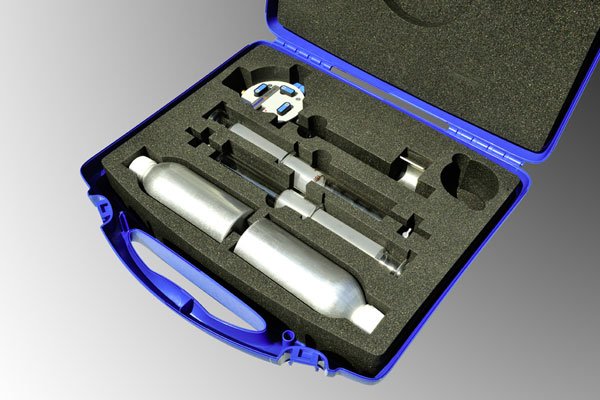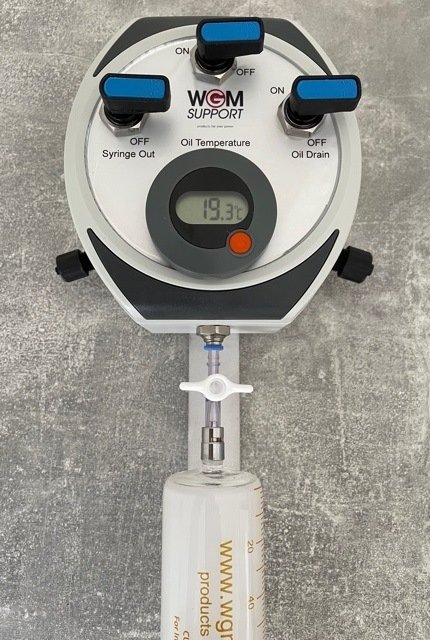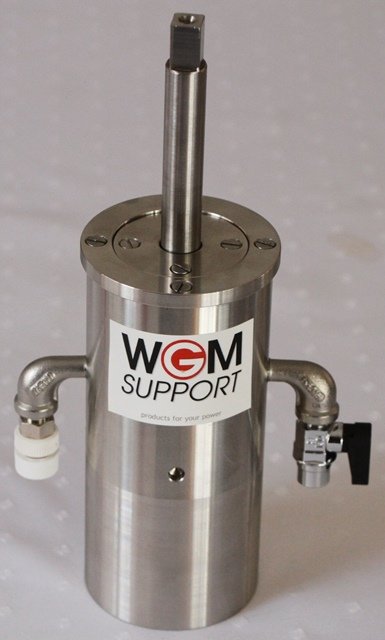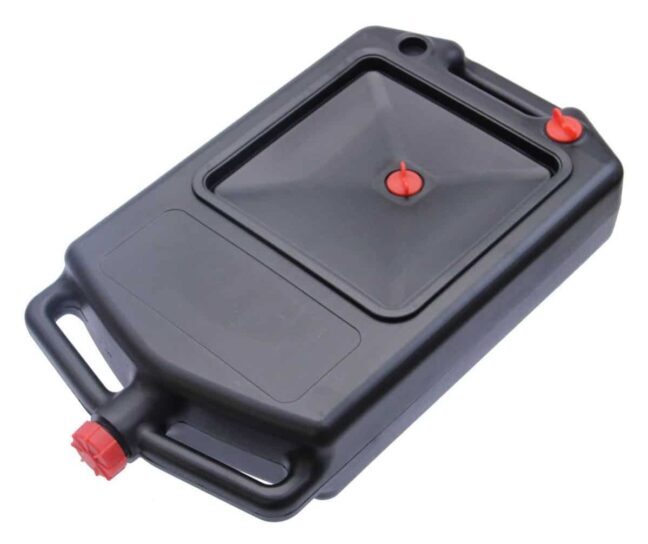Transformer Station Testing: Essential Guidance
Transformer stations play a crucial role in providing reliable connections to the medium voltage or low voltage network, especially as energy demand continues to rise. However, transformer station testing is governed by specific regulations. Laws such as DGUV V3, VDE 0105, and DIN 57 105 mandate revisions of electrical systems and equipment. Consequently, it is necessary to conduct a transformer station test at least every four years.
In addition to testing, it is advisable to clean the transformer station annually and perform a visual inspection. Neglecting the maintenance or servicing of electrical equipment increases the risk of sudden shutdowns, which can lead to significant costs. Factors such as moisture, aging, and dirt can adversely affect electrical equipment, potentially resulting in electrical accidents. Therefore, regular inspections and maintenance of transformers are indispensable.
Transformer Station Maintenance: Key Considerations
An important aspect of transformer testing involves monitoring oil samples to identify age-related changes and detect defects. Contaminants like particles, oil aging products, and acids provide valuable insights into the oil’s condition. Regular oil sampling is crucial for preserving the transformer oil’s service life and maintaining its quality.
Moreover, weak points within the transformer can often be detected through the degradation or decomposition products dissolved in the oil. To enhance the analysis process, gas-in-oil analysis can be employed to determine the oil’s aging process. Proper oil analysis techniques are essential to ensure that samples remain rich in content.
Recommended Tools for Effective Testing
To facilitate effective oil sampling, we recommend the oil sampling kit ÖPEV and DÖPEV. This kit includes the oil drain adapter (ÖPEV-k) and the control unit (DÖPEV), ensuring ease of use for safe oil sampling from transformers. Along with these essential tools, the kit also contains a handwheel, aluminum bottles, a sampling syringe, and the NW22 and NW31 reducing rings. These components work together to streamline the sampling process and improve overall maintenance efforts.
Oil Sampling Set | ÖLEK | Gas in Oil Analysis
The oil sampling set is used to take oil samples from electrical equipment such as transformers, converters or oil switches. When taking oil samples, make sure that the oil sample complies with the prescribed standard. A potential manipulation of the oil sample falsifies the analysis result. The big advantage of oil sampling with the Oil Sampling Set is that no outside air gets into the sample. The set ensures sampling according to the following standards: DIN EN 60567, IEC 567 and ASTM 3612, so the oil sample is ideally prepared for subsequent analysis in the laboratory. In order to avoid repairs and failures, the oil sample must be handled with care.
An early analysis of potential faults extends the service life of electrical equipment. Oil sampling is a crucial element in any oil analysis. Insulating oil analyses: These periodic tests are an important part of the maintenance of transformers for a safe energy supply. In the operational monitoring of oil-filled high-voltage equipment (transformers, instrument transformers, bushings, cables, etc..), decomposition gas analysis is becoming more and more a priority and an important part of the maintenance process. In case of electrical or thermal overload, decomposition gases are formed in the insulating oil, which can be analyzed.
Improper oil sampling or contamination of the test vessels can have a very large influence on the measured values of the individual test methods, so that completely wrong conclusions could be drawn about the quality of the insulating fluids. The oil syringes and aluminium containers must be rinsed with the liquid to be tested before taking the sample. Bottles made of brown glass or drawn aluminium are used as sample containers for insulating oils. Not only the sampling, but also the handling of the oil sample plays an important role.
We offer you advice on the topics of:
Oil sampling | Transformer Oil analysis | Insulating Oil testing
Oil Testing | DÖPEV | Oil Sampling Control
DÖPEV – the display oil sampling device with a twist for oil sampling according to DIN EN 60475 (VDE 0370-3).
Failures due to faulty transformer oil analysis can lead to negative and detrimental developments. They can evidently have serious effects on the power supply and the service life of the transformer. Sampling the oil from oil-filled transformers in operation is an efficient method for determining the condition of the solid and oil insulation. In addition to that, it provides information about the operating condition of the transformer.
And it does so without having to open or deactivate the transformer. Improper oil sampling or contamination can have an immense influence on the measured values of the individual test methods. Ultimately, this can lead to false conclusions about the quality of the insulating liquids. To ensure consistent performance and long transformer life, regular oil testing in installations is essential.
Taking oil samples without contamination
The overall aim is to remove the oil from a transformer without contamination. To further carry out an oil test in the laboratory and analyse the sample. Your result of the “gas in oil analysis” or the other “dielectric measurement methods” can only be as good as you have taken your oil sample. With the new oil sampling system DÖPEV you take the oil sample free of contamination. As well as according to the standard and without contact with the outside air.
ÖPEV-k and DÖPEV: undoubtedly the perfect oil analysis set
These periodic examinations are generally an important part of the maintenance of transformers for a safe power supply. Not only the sampling, but also the handling of the oil sample plays a major role. Sampling and handling are made very easy and effective with the ÖPEV-k and the DÖPEV. Basically, this allows you to carry out an insulating oil test in no time at all. The ÖPEV-k oil sampling device guarantees absolute ease of use for safe oil sampling from oil-filled transformers. In combination with the DÖPEV display oil sampling device, oil sampling becomes even easier.
By means of three ball valves on the DÖPEV you can regulate the oil sample. Furthermore, you can constantly control the temperature of the oil. The oil analysis device DÖPEV can be connected to the oil drain device ÖPEV-k and creates the perfect oil analysis set. With this set you can take the oil sample from the transformer comfortably and contamination-free. And in the next step, transport it to the oil test in the laboratory.
We offer you advice on the topics: Insulating oil sample | Oil testing | Oil analysis device
Distribution transformers | ÖPEV-k | Transformer oil drain tap
Oil filled distribution transformers are a very important part of the power supply, regardless of their size. By performing targeted inspections, maintenance, and servicing, it is possible to extend their service life. However, to properly analyze the contained insulating oil and draw a possible diagnosis, it is necessary to extract the oil correctly. If the insulating oil the transformer contains is faulty, this can in fact lead to serious consequences.
ÖPEV-k oil drain device for transformers
This therefore means that accurate results of insulating oil analysis are critical to the condition of the transformer. The results of an oil sampling additionally determine the further course of action with the oil transformer. In general, the ÖPEV-k is ideally suited for oil sampling, namely on an oil local network transformer. Or on distribution transformers that have a difficult or poorly accessible oil drain valve. On some transformers it is very complicated to take an oil sample. For example, on concrete or complete stations.
But ÖPEV-k guarantees absolute ease of use for safe oil sampling at the transformer. Adapters for the nominal width 22 NW and 31 NW are available as accessories. Consisting of stainless steel, the ÖPEV-k and the adapters thus come in a robust and compact design. The oil drain device ÖVEP-k is screwed onto the drain tap of the transformer with the adapter (for example NW 22). The shaft is then used to open the drain valve of the transformer and the ÖVEP-k fills with oil.
In total, there is an oil sampling tap and a vent valve on the ÖVEP-k. Consequently you can connect a hose to the oil transformer drain tap of the OVEP-k to remove the oil sample without contamination. WGM Support also offers a remote sampling kit to control the oil sample. In summary, the ÖPEV-k is the ideal and indispensable tool for effortless oil draining from oil distribution transformers.
We offer advice on the topics of: ÖPEV-k | DÖPEV | Oil sampling | Insulating oil analysis
Glass Syringe Luer Lock | Glass Syringe 100 ml
Luer Lock Glass Syringe: Secure, Durable, and Precise
The Luer Lock glass syringe is designed for a secure connection using a metal cone. This design ensures durability and precision across various applications. Both the plunger and cylinder are made from high-quality borosilicate glass. This glass resists chemicals and high temperatures, so the syringe stays robust in demanding environments. The clear markings are acid- and alkali-resistant, remaining legible even under rigorous laboratory conditions. Each cylinder and plunger is embossed to prevent mix-ups, making handling safer. Each syringe is individually packaged in a sturdy, foam-padded box for safe transport. Thanks to its modified design, this syringe is ideal for gas-in-oil analysis, combining high precision with reliability.
Wide Range of Options: WGM Support Product Range
WGM Support offers a wide selection of glass syringes, available in volumes from 1 ml to 200 ml. This range covers specific needs in both laboratory and industrial settings. The model shown here is the 100 ml glass syringe, type WGM-100. It includes a calibrated cylinder for precise measurements. An optional two-way stopcock with a Luer Lock connection can be added, allowing for controlled injections and extractions. This option enhances the syringe’s versatility, making it suitable for specialized tasks.
Advantages and Key Features
Material Quality and Standards Compliance
The syringe’s borosilicate glass construction is both heat-resistant and compliant with essential international standards. These include ISO 594/1, 595/2, IEC 60475, IEC 60567, and ASTM 3613. Compliance ensures reliable performance and compatibility in professional lab environments.
Enhanced Break Resistance for Longevity
The glass and construction are designed for shock resistance. This allows the syringe to withstand sudden temperature changes. Key areas prone to breakage—such as the Luer Lock connector and cylinder housing—are reinforced, reducing breakage risks. This reinforcement ensures long-lasting use.
Precision Plunger for Smooth, Controlled Use
The plunger is tested for leak-proof performance and meets GG-S-92 / 54840 / ISO 7886 standards. Its smooth, low-resistance movement allows precise control. The plunger is also tested for back-pressure resistance, making it highly reliable in applications requiring accuracy and control.
We offer you advice on the topics of: Glass syringes | Dissolved Gas Analysis (DGA) Syringe
Transformer oil drip trays | 10 litre oil drip tray
High-Performance Transformer oil Drip Trays with 10-Litre Capacity
Product Description
The 10-litre transformer oil drip trays are essential for anyone who regularly changes oil in transformers or electric coils. These portable trays are specifically designed to simplify the oil change process. At the same time, they help keep your work area clean. Their slim design makes them particularly suitable for low oil drain taps with limited ground clearance.
These trays are constructed from robust and durable plastic. They can withstand temperatures up to 60°C. Additionally, they offer excellent resistance to a wide range of solvents. This includes acids, alkalis, alcohol, oil, petrol, chemicals, and antifreeze. Their impact-resistant design ensures a long service life. Plus, the 10-litre capacity provides ample space for used oil.
The trays feature a concave drainage surface. They come equipped with three openings, each fitted with secure caps to prevent accidental spills. The bright red color of the caps makes it easy to identify the outlet openings, even in busy work environments. Furthermore, three sturdy carrying handles are integrated into the design. This allows for safe and easy transport when the tray is full.
Instructions for Use
- Before starting the oil change, loosen both red wing screws to expose the outlet openings.
- Position the transformer oil drip tray under the oil drain of the transformer or e-coil. Make sure the depression covers the oil drain point.
- Once the tray is full, dispose of the waste oil safely at an authorized waste oil collection point. This helps prevent environmental pollution.
The state-of-the-art 10-litre drip tray makes changing oil effortless and efficient. Additionally, it is designed to be environmentally friendly.
We offer you advice on the topics of: Transformer oil | Oil sampling | Drip tray





